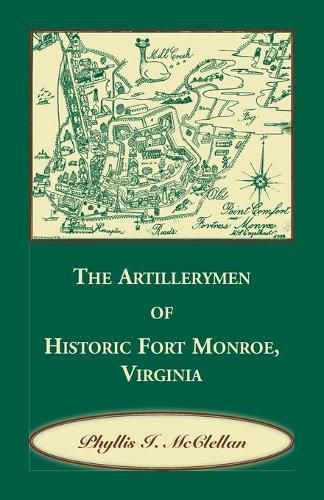Readings Newsletter
Become a Readings Member to make your shopping experience even easier.
Sign in or sign up for free!
You’re not far away from qualifying for FREE standard shipping within Australia
You’ve qualified for FREE standard shipping within Australia
The cart is loading…






This title is printed to order. This book may have been self-published. If so, we cannot guarantee the quality of the content. In the main most books will have gone through the editing process however some may not. We therefore suggest that you be aware of this before ordering this book. If in doubt check either the author or publisher’s details as we are unable to accept any returns unless they are faulty. Please contact us if you have any questions.
This work began with the intent to compile a complete list of the occupants of the officers - and noncommissioned officers - quarters at Fort Monroe from 1819 to 1987. The author’s research led her to records at the National Archives and local resources such as phone books, bank records, and records held by the fort; she also contacted 1,000 retired officers who had served at the fort, asking them to recall the names and residences of their contemporaries. The 850 replies she received contained much more than that: many also recounted fond memories of the fort. Thus, this work evolved from a simple listing of names to a broader history of the fort and the men who lived there. The first part of the volume is arranged as a self-guided tour, presenting a great opportunity for readers, visitors, and historians to take a mile and one-half walk through the small moated fort while visualizing the lives of the military families who lived in the gracious old houses. Reminiscences about and legends associated with various parts of the fort are revealed as each building is visited in turn. This section also includes a historical overview of the development of the fort. The second part of the book is composed of three lists: the occupants of 115 sets of officers’ quarters and ninety sets of noncommissioned officers’ quarters, and artillerymen from the fort who rose to field officer rank or above. More than 8,000 entries are included. Ten appendices provide additional information about life in and around the fort, from the development of utilities and sanitation, to the establishment of the canteen, to the establishment of the nearby Chamberlin and Hygeia hotels.
$9.00 standard shipping within Australia
FREE standard shipping within Australia for orders over $100.00
Express & International shipping calculated at checkout
This title is printed to order. This book may have been self-published. If so, we cannot guarantee the quality of the content. In the main most books will have gone through the editing process however some may not. We therefore suggest that you be aware of this before ordering this book. If in doubt check either the author or publisher’s details as we are unable to accept any returns unless they are faulty. Please contact us if you have any questions.
This work began with the intent to compile a complete list of the occupants of the officers - and noncommissioned officers - quarters at Fort Monroe from 1819 to 1987. The author’s research led her to records at the National Archives and local resources such as phone books, bank records, and records held by the fort; she also contacted 1,000 retired officers who had served at the fort, asking them to recall the names and residences of their contemporaries. The 850 replies she received contained much more than that: many also recounted fond memories of the fort. Thus, this work evolved from a simple listing of names to a broader history of the fort and the men who lived there. The first part of the volume is arranged as a self-guided tour, presenting a great opportunity for readers, visitors, and historians to take a mile and one-half walk through the small moated fort while visualizing the lives of the military families who lived in the gracious old houses. Reminiscences about and legends associated with various parts of the fort are revealed as each building is visited in turn. This section also includes a historical overview of the development of the fort. The second part of the book is composed of three lists: the occupants of 115 sets of officers’ quarters and ninety sets of noncommissioned officers’ quarters, and artillerymen from the fort who rose to field officer rank or above. More than 8,000 entries are included. Ten appendices provide additional information about life in and around the fort, from the development of utilities and sanitation, to the establishment of the canteen, to the establishment of the nearby Chamberlin and Hygeia hotels.